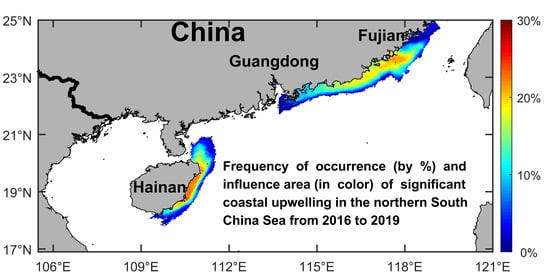Using TPI to Map Spatial and Temporal Variations of Significant Coastal Upwelling in the Northern South China Sea
Abstract
Share and Cite
Shi, W.; Huang, Z.; Hu, J. Using TPI to Map Spatial and Temporal Variations of Significant Coastal Upwelling in the Northern South China Sea. Remote Sens. 2021, 13, 1065. https://doi.org/10.3390/rs13061065
Shi W, Huang Z, Hu J. Using TPI to Map Spatial and Temporal Variations of Significant Coastal Upwelling in the Northern South China Sea. Remote Sensing. 2021; 13(6):1065. https://doi.org/10.3390/rs13061065
Chicago/Turabian StyleShi, Weian, Zhi Huang, and Jianyu Hu. 2021. "Using TPI to Map Spatial and Temporal Variations of Significant Coastal Upwelling in the Northern South China Sea" Remote Sensing 13, no. 6: 1065. https://doi.org/10.3390/rs13061065
APA StyleShi, W., Huang, Z., & Hu, J. (2021). Using TPI to Map Spatial and Temporal Variations of Significant Coastal Upwelling in the Northern South China Sea. Remote Sensing, 13(6), 1065. https://doi.org/10.3390/rs13061065







